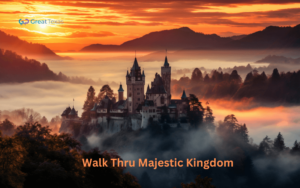Introduction
According to the great masterpieces given in this work, art is the language that is beyond the temporal and spatial constraints – which is one of the reasons they can be described as universal. Some people picture this truth as a few artists, and one of them is Alexandra Eber. This paper will explore Al-H as a visionary artist who has demonstrated great determination and commitment in her artistic pursuit. Originally born in Paris but only to rise with reputation and establish herself in the art world, Eber comprises one of the greatest arts that depict transformations. Here one will find a comprehensive overview of her life, her development as an artist, and her consequent influence on today’s modern art movement.
Early Life and Education
Childhood Influences
Alexandra Eber was born in 1985 in Vienna, Austria, and was culturally exposed and passionate about following her dreams. Born into a family with two talented artists as her parents she grew up with a fondness for art. Growing up with art materials and books and surrounded by music Eber’s childhood was more of learning and discovering. Visits to museums and galleries by her family encouraged her passion for choosing art and learning different types of artistic orientations and beliefs.
Formal Education
Eber obtained her formal education in fine arts at the University of Applied Arts, Vienna. There, she was able to learn from professors of art who advised her to try other art forms such as painting, sculpture, and collage. In her learning processes, she developed a special passion for combining traditional styles with modern topics. With a trailing suitcase, Eber graduated from university with honors, ready and vested with a diverse set of skills for her artistic life ahead.
Artistic Development
Early Works
On her graduation, Eber started developing her artistry. Her early work was reproducing complex abstract form emission and accurate use of bright colors. To some extent, she mimed what she saw with her comprehension of modern city life as well as wildlife. Hays’ creations like “Urban Echoes” (2011) depict the energy and actions of the cities; works that depict nature’s interest, including “Whispers of the Forest” (2012).
Influences and Inspirations
Like any other artist, Eber’s artistic career has been influenced by diverse elements. Famous artists like Ah, Gustav Klimt, as well as Egon Schiele, influenced her in matters touching on color and form. Also, she has been inspired by art movements such as Expressionism of painting and Abstract Art to create new forms of painting. Eber’s travels in Japan and Brazil deepened her artistic experience allowing her to view art from a different cultural perspective. Among her works from these periods are motifs that are reminiscent of complex ornaments of Japanese textiles and the warm tones of Brazilian landscapes.
Major Themes in Eber’s Work
Nature and Environment
Another of the major subjects that runs through a significant part of Alexandra Eber’s work is the author’s relationship with nature. Her artwork is mostly focused on the social theme of the interaction between humans and the environment, showing its strengths and weaknesses. The vivid color palette and organic shapes with which Eber’s works are painted and illustrated respect environmental themes. In her much-publicized series titled “Ecosystem Reflections,” she mirrors the balance of ecosystems, the techniques used resemble organisms’ surface topographies. This series not only adores nature but also gives people a reflection of how fragile the ecosystem is.
Identity and Cultural Heritage
From a multiculturalism perspective, the book also puts forth issues to do with identity and culture by Eber. As an artist of partially Austrian, partially Hungarian origin, she often subjects her art to the themes of identity and loneliness of the immigrant. In her artwork Roots of Belonging, she shows the struggle that people with dual identities go through. It is due to its relevance to personal experiences this connection is enjoyed by many people which creates a good platform through which people can appreciate her work.
Emotion and Expression
The second important peculiarities of Eber’s art are emotions and expression as the major tendencies. That is why the ability to express quite detailed emotions in her work has always been the key to her approach. Most of Eber’s paintings project the feeling of reminiscence, desire, or self-examination in viewers. In her work of art titled Silent Yearnings, she employs abstract forms of complex and soft colors to paint emotions of loss and hope, thus establishing a rich link.
Career Milestones
Exhibitions
After her first solo exhibition, Alexandra Eber has exhibited in many other exhibitions at the international level, in private galleries and art fairs. The most significant point in her story was her first solo exhibition in Art Space Vienna in 2010. The show was well received critically and artistically and set the place for her to make her debut in the art fraternity.
| Year | Exhibition Name | Location |
| 2010 | “New Beginnings” | Art Space Vienna |
| 2012 | “Nature’s Whisper” | Museum of Modern Art |
| 2015 | “Reflections of Identity” | International Art Fair |
| 2018 | “Ecosystem Reflections” | Contemporary Art Gallery |
| 2022 | “Emotional Landscapes” | Global Art Forum |
Eber’s popular exhibitions are frequented by a lot of enthusiasts, and her artwork has been printed in art magazines, which contributed greatly to her presence in art circles.
Awards and Recognition
Eber’s inputs in the art fraternity have however not been immobilized. She has the privilege of being awarded the Austrian State Prize for Visual Arts in 2016 and the European Art Award in 2019. These achievements do more than underscore her capabilities in the artistic field but also show dedication toward societal causes in her artistic endeavors. Another work of hers, titled ‘Urban Echoes’, bagged her the People’s again at the Vienna Art Fair testimony to her interaction with the larger masses.
Collaborations
Since her career, Alexandra Eber has worked together with other institutions and artists. In her collaboration with Green Art Initiative, she has done the “Art for Nature” program which promotes awareness of environmental matters through art. Eber also worked with local schools to include children in artworks related to the environment for purposes of art and environmental appreciation.
Must Read: Powerful Secrets to Embrace Your Baddie Hub Style
Impact on Contemporary Art
Contribution to Art Movements
Eber has done a lot in contemporary movements and, therefore, his approach to art has been unique. She has been able to come up with her specialty by using traditional styles of work but with contemporary themes. She provokes the typical sets of the culture to change the way people think about artwork. The idea that Eber adds private stories to public matters has made her one of the leading figures of today’s identity, nature, and emotion debates.
Influence on Upcoming Artists
Here, she was also a role model among the young generation of artists and a good mentor as well. In the workshops and lectures, she teaches students and is inspired by her own experiences, enhancing the creativity of learners. This tradition is continued by her devotion to the development of the Young Artists Collective where she gives helpful tips and mentorship to young artists. He notes that Eber’s commitment to education and career guidance means more of her impact is going to be felt in art for many years to come.
Conclusion
Looking at the path that Alexandra Eber has taken in her career one can see her love, hard work, and the talent that she had from the start of her career. It involves nature, emotions, and identity and this has enabled her to develop a theme that will touch any audience in the world. However, continues to grow. Eber has much to give to the art world and today she is an example of an artist whose career will remain greatly significant. Her capacity to engage substantial viewers and her promise to comment on social challenges make her a major figure in art currently.








